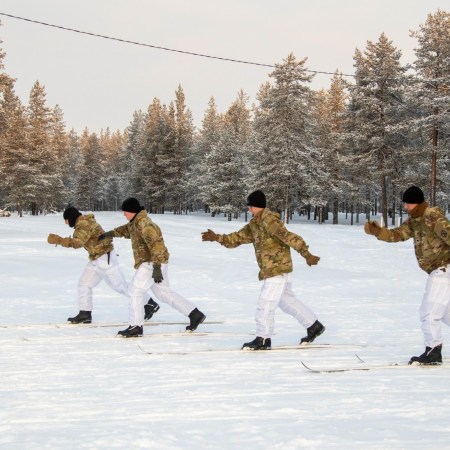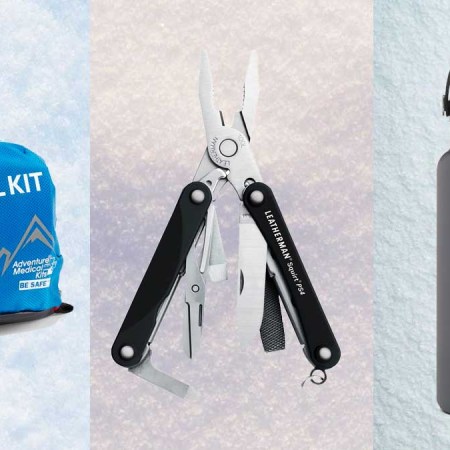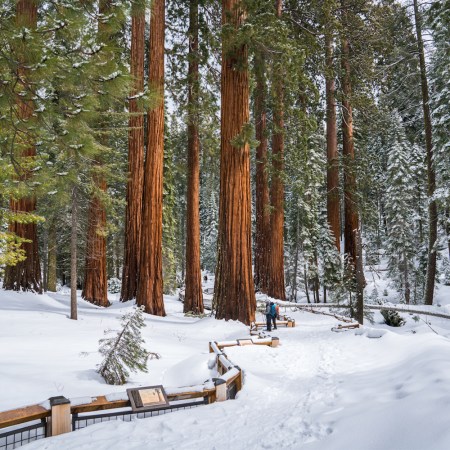Every year, the city of Tromsø, Norway — 77,000 strong, and one of the largest settlements north of the Arctic Circle in the world — gears up for two months of polar night. Here’s a photo of Tromsø’s skyline all lit up for an early afternoon in December. Locals see less than three hours of scattered sunlight each day (at best) during this period. Temperatures are typically around 25 °F.
Tromsø is an almost obnoxiously charming place. The town’s claim to fame is that it contains the most “old wooden homes” in Northern Norway. But how could locals possibly tolerate two months of punitive cold and unrelenting darkness? You would assume they have a massive problem with seasonal affective disorder, also known as “winter depression,” which millions of Americans currently grapple with.
But Tromsø regularly reports fewer cases of seasonal affective disorder per capita than much sunnier places. This recently piqued the interest of Kari Leibowitz, a health psychologist from Stanford University. She designed a survey called the “wintertime mindset scale,” which focused on Tromsø, plus two other Norwegian locales: Oslo, the nation’s capital, to the south, and Svalbard, home to one of the world largest populations of polar bears, to the north. Leibowitz asked locals a series of questions about the darkest days of the year, with particular emphasis on how the winter affected their mindset.

Those who strongly agreed with positive statements about the winter (“There are many things to enjoy about the winter,” “Winter brings many wonderful seasonal changes,” etc.) were also most likely to report experiencing successful winters. They also scored highest on figures for mental health and life satisfaction. That sensibility changed accordingly as Leibowitz brought her survey north or south. Norwegians up in Svalbard were more likely to approach the winter with excitement than those in Tromsø, who approached the winter with more excitement than those in Oslo, and so on.
Leibowitz’s main takeaway from the study? The power of positive thinking. Norwegians employ techniques like “active coping,” “mental framing,” and “visualization” to get through tough winters. They’re still susceptible to anxiety and wind chill like everybody else, but they actively choose to view the polar night, and its surrounding months, as an opportunity. More northward Norwegians have more cause to embrace winter, because they’ve evolved to understand that they have no other choice. The most potent tool these locals have for getting through the winter isn’t hiding from it, but preparing for it, going out in it, naming it, seeing — with expectations kept low — if there might be some bright spots in all the darkness.
It’s an especially relevant point of view right now, as we face what could be one of the longest, most upsetting winters in memory. It isn’t just grey skies and frost this time around; it’s also the heady heartache of an ongoing quarantine. Is optimism enough to carry us to spring? That depends. The potency of the Norwegian mindset — which, we should point out, is a model followed by all the Nordic nations — is in its exact behavioral actions. In other words: getting outside.

Norwegians ski, they snowshoe, they hike, they don’t let a fresh snowfall pass them by. That might sound like torture to you, but it’s a lifestyle with proven health benefits. Spending time outside during the winter increases the basal metabolic rate, which helps the body burn more calories. For those truly committed — the cold-weather runners — low-temperature exposure can even turn white fat (the inflammatory fat linked to heart disease) to brown fat (naturally occurring fat that produces heat), through a process called “cold sculpting.” But you don’t need to go for a run. Committing to just a simple daily outdoor activity, no matter how dreary it looks out there, can both foster longevity (Vitamin D is essential for bone health, melatonin exposure leads to better sleep) and greet short-term concerns (cool temps aid in cognitive performance, getting off the couch has a direct impact on creativity).
It’s human nature to assign countdowns to things we’d rather not do. Any sort of commitment is positive, but if you force yourself to get outside every day from now until late March, you will probably spend less time outside during each session, and therefore get less out of the ritual. The key is to find something that works for you: sitting on your terrace or porch with a mug of tea, biking around the neighborhood, birding. Whatever works. Research published in Nature in 2019 concluded that the benefits of spending time outside begin at 120 minutes a week, and “max out” at 300 minutes a week. That’s a range of 17 to 43 minutes per day. The study stresses the importance of regular interaction with “greenspace”; in this case, the same might be said for “whitespace.”
Consider the way the hours fly by for kids sledding or having snowball fights. They want one more run, 10 more minutes. Endless hours in the cold can be quite desirable for adults, too — America’s skiing industry is worth $1.2 billion over a normal season for a reason. For those who’ve just gotta have the number, 20 minutes outside, daily, is a great place to start. But don’t stress about that. Try not to regiment optimism and opportunity. Winter isn’t hopeless; it’s what you make it. At a time like this, that sort of control is incredibly rare. Let it inspire you. Get out there, for as long as feels right, and when you get back, feel free to partake in another Norwegian tradition: koselig, their term for hunkering the hell down.
This article was featured in the InsideHook newsletter. Sign up now.






















